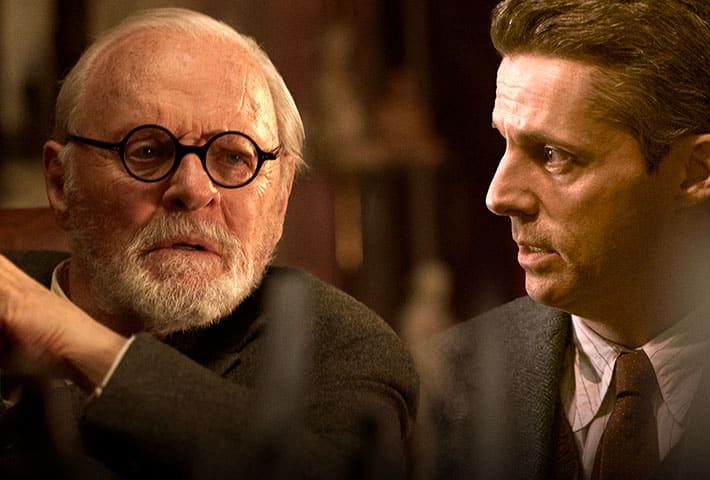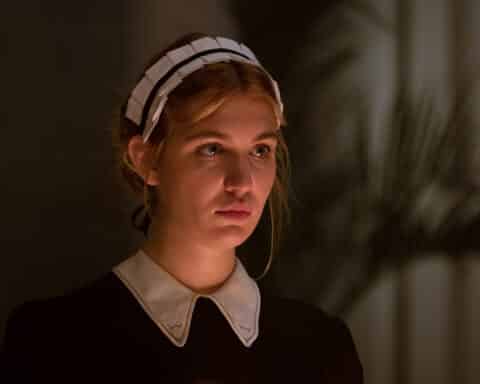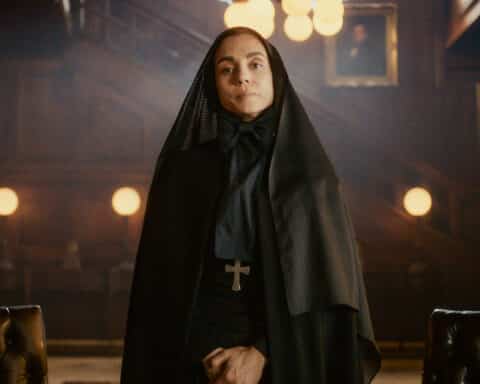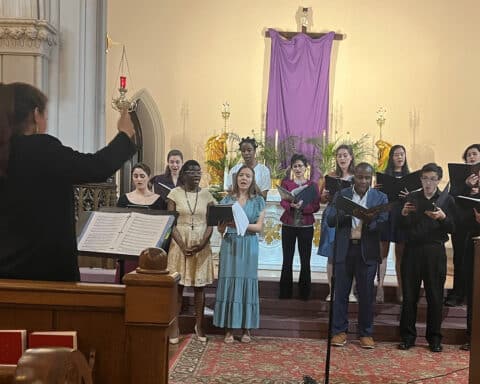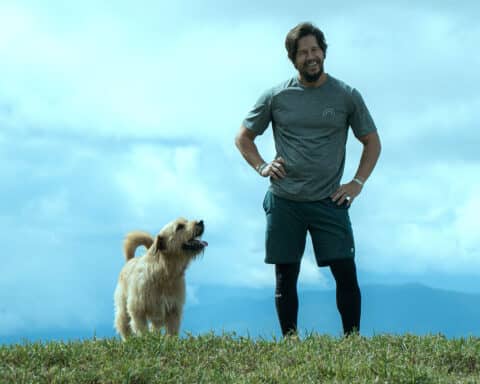In a cinematic world often captivated by action and spectacle, director Matthew Brown brings a refreshing depth of intellectual and philosophical engagement with his latest film, “Freud’s Last Session.” This film features a screenplay co-written by Mark St. Germain and Brown and offers a narrative rich in historical context and character complexity.
Starring the legendary Anthony Hopkins as the pioneering psychoanalyst Sigmund Freud and the versatile Matthew Goode as the renowned author and scholar C.S. Lewis, “Freud’s Last Session” is set on the tense precipice of the Second World War. It presents a fascinating what-if scenario, a meeting of minds between two of the 20th century’s most influential figures. The film delves into the personal and ideological battle over one of life’s most profound questions: the existence of God.
The narrative interweaves the lives of Freud and Lewis, taking audiences on a journey that transcends time and space. The story moves seamlessly between the past and present, blending reality with fantasy. The setting, concentrated mainly in Freud’s study, becomes a crucible for an intense intellectual exchange, yet the film breaks these confines to offer a dynamic exploration of both characters’ complex inner worlds.
In this interview, we sit down with director Matthew Brown to discuss his vision for “Freud’s Last Session,” the challenges of bringing such towering historical figures to life on the big screen, and the relevance of this philosophical debate in today’s world. We’ll explore how Brown navigated the interplay between two contrasting personalities and ideologies and what he hopes audiences will take away from this unique cinematic experience.
A film about the question of God
Our Sunday Visitor: Why was this film important for you to make?
Matthew Brown: It’s a good question. The timeliness really drew me to the film, along with the deeper themes. I’ve always been drawn to things with deeper themes due to a lot of loss in my life. Mortality was something I was always very aware of. I’ve always wanted to investigate it through my works. We did it in my last film, “The Man in New Infinity,” and now it’s front and center in this film. Those themes drew me in.
I started this process about six years ago when things had already become so polarized in our country. Now, it’s that on steroids. I was inspired by the idea of two great minds seeking out a debate respectfully. They don’t have to agree, but they respect each other. By the end, even though they still disagree, they like each other. They haven’t changed each other’s minds, but they’ve questioned their faith, which I thought was beautiful.
Beyond being beautiful, it was also important. I want people to listen and talk. The film is largely about the question of God. I’m intimidated by it, but as an artist, you can’t let yourself think about it too much. It’s a human story of two people going through their own therapy sessions. We’re all human at the end of the day, and our supposed enemies are human and struggling, too.
Our Sunday Visitor: You managed an all-star cast. How did you get Matthew Goode to play C.S. Lewis and Anthony Hopkins to play Sigmund Freud?
Brown: Anthony was always the top choice. It took two tries to get him. It’s not easy to get Anthony Hopkins for your movie. His involvement helped us get Matthew Goode, who idolized Anthony as a child. Matthew did a beautiful job embodying C.S. Lewis. Hopkins brought his own mortality to Freud. He’s 86, still excited about life, but aware of his limited time. He brought a lifetime of experiences to Freud. I loved that Freud, at the end of his life, was still intellectually curious enough to bring in Lewis to hear about his conversion from atheism to Christianity.
Our Sunday Visitor: Were there any unexpected moments during filming? Things that came together in ways you didn’t expect?
Brown: Yes, there were quite a few. We didn’t have a big budget for CGI, so most of it was done in camera. We had real moments like the deer in the woods. For Tony and Matthew, memorizing seven pages of dialogue a day was astounding, especially at Tony’s age. The crew was respectful, allowing the actors to take chances and make the dialogue scenes as authentic as possible. I found a lot of modeling going on, inspiring me to be more like Lewis and Freud.
An opportunity to ‘have your faith tested’
Our Sunday Visitor: What do you hope people take away from the film?
Brown: I hope they take away conversation and discussion. My brother-in-law, a pastor and big C.S. Lewis fan, loved the film. He said it’s important as a Christian to have your faith tested. The film offers that opportunity. It’s about challenging each other with respect, taking things from the other side. It’s about the question of our time: science and religion. They don’t have to be mortal enemies. They might have more in common than we know. We need discussion, diplomacy and respect. My message for the movie is to not have a message in the direction of the movie and let people make up their own minds.
Our Sunday Visitor: The setting of the war resonates with current conflicts like the Israel-Hamas war and Russia’s war in Ukraine. How do you think people will perceive these conflicts in the historical setting of the film?
Brown: We need to learn from history to avoid repeating mistakes. The film is set on the eve of World War II. We have dark clouds around us now, and I hope we can avoid World War III by talking and listening with respect. Freud represents a different point of view: What do you do when bombs are dropping on your children? The situation is complicated, but that shouldn’t intimidate us into silence. The film is a historical hypothetical, and it may or may not have happened.
Our Sunday Visitor: Were there any challenging moments for you as the director?
Brown: The biggest challenge was turning a play about two people in a room into a movie that tackles all their history and flashbacks. We had to navigate preconceived notions of history and find a way through all that. The film shows natural parallels and the role of history, hoping it doesn’t repeat itself. I’m optimistic at the moment.
Our Sunday Visitor: What’s next for you?
Brown: I have a few projects. One is “Little Princess,” about children trafficked in Nepal, with producer Brunson Green. Another is a romantic comedy about a food taster in King Louis XIV’s court with Ridley Scott’s company. And another about John Lennon. It’s important to have a few things in the pipeline in this business, especially stories with deeper themes that are difficult to finance and make.

